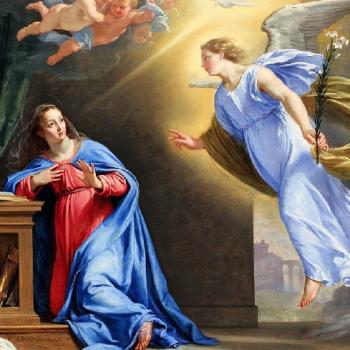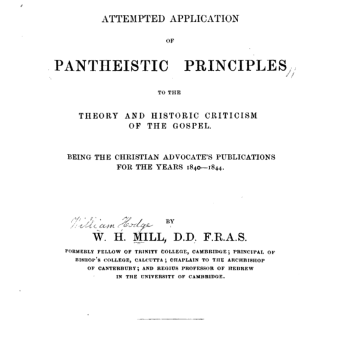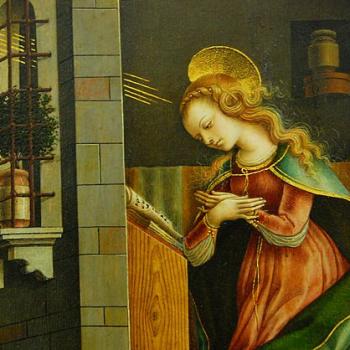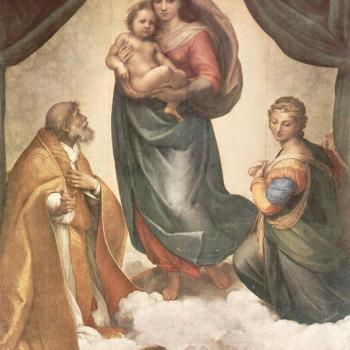. . . Concentrating on the New Eve Analogy in the Church Fathers and its Full Implication Regarding Mary’s Freedom from Actual and Original Sin
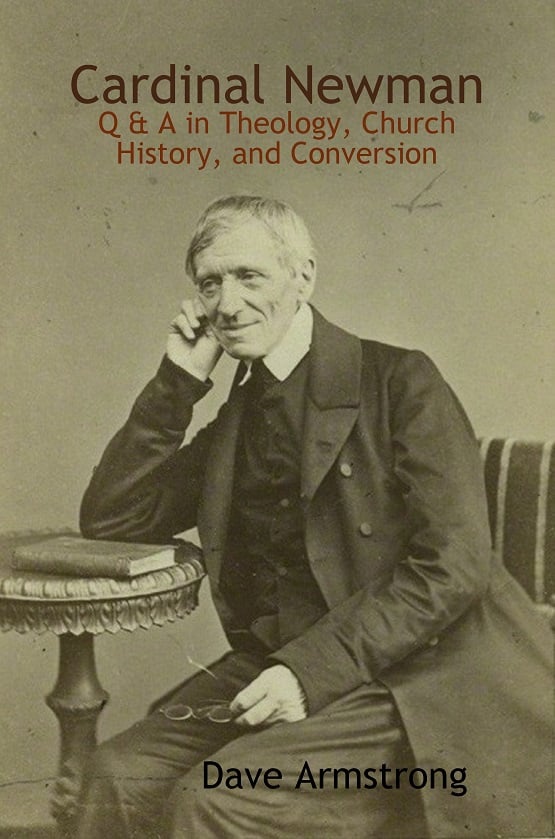
This is a follow-up to my previous articles, Mary’s Sinlessness & the Fathers (vs. Javier Perdomo) [2-5-25] and Patristic Development of a Sinless Mary (Cdl. Newman) [2-6-25], and responds to a further counter-reply from the Lutheran apologist and YouTuber, Javier Perdomo, on his own thread, Church Fathers & Medievals on the Immaculate Conception [2-4-25]. His words will be in blue.
*****
Thank you for taking the time to thoughtfully interact with my article.
My pleasure. Same back to you.
ON YOUR USE OF CARDINAL NEWMAN’S QUOTES
Surely, Cardinal Newman (as well as yourself) would have a deeper familiarity with the full extent of Mariology in Church History than I do since, at least at the time of writing this comment, I haven’t yet embarked on a deep-dive into all facets of historical Mariology. That being said, I see quite a few problems with Cardinal Newman’s approach to this issue (at least in the quotes you’ve provided).
Newman seems to equate patristic assertions of the Blessed Virgin (B.V. from henceforth) “being without sin” as to her “being conceived and born without sin.”
Surely, we can see that there’s a gap between those two ideas which hasn’t been bridged yet.
He does not do so. Rather, he argues it as follows (which was in my reply):
As to the antiquity of the doctrine. In the first ages original sin was not formally spoken of in contrast to actual. . . . Not till the time of St Augustine could the question be mooted precisely whether our Lady was without original sin or not. Up to his time, and after his time, it was usual to say or to imply that Mary had nothing to do with sin, in vague terms. . . . This does not go so far as actually to pronounce that she had the grace of God from the first moment of her existence, and never was under the power of original sin, but by comparing her with Eve, who was created of course without original sin, and by giving her so high an office, it implies it. (The Letters and Diaries of John Henry Newman, vol. 22; To Lady Chatterton, 2 Oct. 1865)
For example, say that one of your friends has just watched Forrest Gump for the first time and approaches you to talk about the movie. He talks about the different characters and eventually makes his way to Lieutenant Dan, starting off saying something like, “Man, it makes sense that he was so bitter and despondent. I mean, just imagine being without legs.” If you then responded to your friend by saying, “Man, yeah, I would be pretty despondent too if I had been born without legs.” Your friend would likely look at you with a puzzled look on his face. Why? Lt. Dan wasn’t born without legs; in fact, he has both of them in an earlier point in the movie.
To say that someone “was without [INSERT THING HERE]” does not necessitate that said person was without said thing from the moment of their birth or conception — that would require additional supporting context or arguments to help bridge the gap.
The additional “context” would be the sufficiently full development of the doctrine of original sin. Cdl. Newman says this didn’t occur until the time of St. Augustine: some 350 years after the death of Jesus at a minimum. Accordingly, Anglican J. N. D. Kelly (Early Christian Doctrines, HarperSanFrancisco, rev., 1978, 172) writes about St. Irenaeus, that he “nowhere formulates a specific account of the connexion between Adam’ guilty act and the rest of mankind.” In the earlier Justin Martyr, we find — as we would expect — an even simpler conception. Kelly describes it as “the sin of Adam and Eve . . . is the prototype of our sin” (p. 167).
Likewise, Tertullian’s view “can hardly be read as implying our solidarity with the first man in his culpability (i.e., original guilt) as well as in the consequences of his act” (p. 176), and Origen’s position “entails . . . the abandonment of any doctrine of corporate sinfulness” (p. 181). Conclusion: the doctrine was still developing, so that a fully developed view of the immaculate conception (presupposing corporate original sin) couldn’t occur until the 4th or 5th century.
Thus, Newman was making no false equation or committing equivocation; rather, he was simply pointing out the history of the development of the doctrine of original sin. He also notes the implications of analogizing Eve and Mary, since Eve was indeed created without original sin and was sinless before the fall. So this implies a sinless Eve by analogy, and this comparison occurs early and widespread in the fathers, which was Newman’s main patristic argument in this respect.
In the case of the B.V., even if someone makes a statement about her being sinless in some sense, there’s a range of options to choose from as to what that means: 1. She may have been conceived literally without sin, 2. She may have been hyperbolically “without sin” in a particular instance (denoting how righteous and pleasing to God a particular decision/action was), 3. She may have been generally “without sin” in a hyperbolic sense (denoting how particularly righteous her heart and actions were as a whole in comparison to other people), 4. She may have been literally without sin after a particular event or point in time (such as the annunciation or her being overshadowed by the Holy Spirit, for example) despite having been sinful prior, or 5. She may have had sinful flesh but never chosen to act upon the flesh’s sinful desires (i.e. – having original sin, but no actual sin). The context is really important for determining which of these is meant by the person making the statement.
I agree; but in the pre-Augustinian fathers, all of this was formulated with an insufficiently developed understanding of original sin, and you still have to face the fact that if Mary is directly compared to the pre-fall Eve, then she must have been sinless as Eve was, which was an actual, pure sinlessness, from before the fall of mankind: as God originally intended it to be for all of us.
The way Newman attempts to bridge the gap is through a typological argument with the B.V. being the New Eve. For the sake for the argument, let’s grant that typological connection. Why should we assume that this means Mary was sinless from conception?
It strongly implies it, by the reasoning I just provided. Let me try to explain it some more. Eve was the one person, along with Adam, who was absolutely pure and without sin. This has implications for original sin, too, since Eve totally lacked that before her rebellion and fall; hence, Mary would have to possess the same traits in order to do better than Eve did, and to be the New / Second Eve. But the earlier fathers wouldn’t have a full understanding of that because they didn’t yet grasp original sin in its fullness.
Does everything about Eve transfer on to Mary? We know that, even prior to the Fall, God commanded Eve to be joined to her husband, and to be fruitful and multiply to replenish the earth (Genesis 1:28)… but, you wouldn’t agree that this aspect of Eve transfers to the B.V. (since you affirm her perpetual virginity). Pre-Fall, Eve felt no shame and wore no clothes everywhere she went… but you don’t believe that transfers over to the B.V.. Pre-Fall, Eve wouldn’t have experienced natural death… but you don’t believe that transfers over to the B.V.
An analogy on one sense has nothing logically to do with possible additional analogies, so this is a non sequitur.
It would seem as arbitrary to me to try to pass along Eve’s sinlessness from conception to the B.V. as it would be to pass on any of the aforementioned attributes to her.
That doesn’t follow logically, if the topic at hand is sinlessness and freedom from original sin. Catholics don’t dogmatize about whether Mary died or not, though most believe that she did (including myself), since the analogy there is to her Son.
This is especially the case when even some of the Church Fathers that Newman relies on do not speak of the B.V. in terms of having always been sinless, or anything of the sort, when discussing her as the New Eve.
They don’t technically have to, because the one-to-one comparison is being made, and we all agree that Eve was sinless and without original sin before the fall. I already noted that different doctrines develop at different rates. And with some doctrines, there are relatively more exceptions than with others. That’s the case with this. It’s not fatal to our view at all, because it’s simply the reality that we observe in studying the fathers and examining any given doctrine throughout its history.
If Protestants want to claim that the patristic facts you collect disprove Mary’s Immaculate Conception or even a Mary free of actual sin only, then you are in a world of trouble when it comes to the two “pillars” of Protestantism: sola Scriptura and sola fide. I myself have collected dozens and dozens of proofs showing that virtually no Church father — perhaps literally none — believed in either one (see the categories “VII. Bible / Tradition / Sola Scriptura” and “XXIV. Salvation / Justification / “Faith Alone” on my Fathers of the Church web page).
Irenaeus, in particular, applies the typology simply to say that Eve chose to disobey God when approached by Satan (which brought about humanity’s Fall), whereas the B.V. chose to obey God when approached by Gabriel (which would bring about humanity’s Redemption).
As I already showed from Kelly, Irenaeus didn’t understand original sin as the Church later did from the 4th century onward.
Here is the full quote from Irenaeus that Newman made reference to:
That the Lord then was manifestly coming to His own things, and was sustaining them by means of that creation which is supported by Himself, and was making a recapitulation of that disobedience which had occurred in connection with a tree, through the obedience which was [exhibited by Himself when He hung] upon a tree, [the effects] also of that deception being done away with, by which that virgin Eve, who was already espoused to a man, was unhappily misled,—was happily announced, through means of the truth [spoken] by the angel to the Virgin Mary, who was [also espoused] to a man. For just as the former was led astray by the word of an angel, so that she fled from God when she had transgressed His word; so did the latter, by an angelic communication, receive the glad tidings that she should sustain (portaret) God, being obedient to His word. And if the former did disobey God, yet the latter was persuaded to be obedient to God, in order that the Virgin Mary might become the patroness (advocata) of the virgin Eve. And thus, as the human race fell into bondage to death by means of a virgin, so is it rescued by a virgin; virginal disobedience having been balanced in the opposite scale by virginal obedience. For in the same way the sin of the first created man (protoplasti) receives amendment by the correction of the First-begotten, and the coming of the serpent is conquered by the harmlessness of the dove, those bonds being unloosed by which we had been fast bound to death. (ANF01, Against Heresies: Book V, Chapter XIX)
Again, if Mary was the New Eve because she said yes to God, then she had to be without sin because the analogy was to the pre-fallen Eve who was without actual or original sin at the time when she was called upon to choose God or herself. Mary said yes, and so she had to be at least as “high” in the scheme of things as the unfallen Eve in order to do so.
This is how and why the New Eve analogy implies both a sinless Mary (free from actual sin) and by extension, with a fuller understanding, a Mary free from original sin as well. Far from being a disproof of Newman and development of doctrine, what we see in earlier fathers like St. Irenaeus is exactly the sort of thing that we would expect to find according to Newman’s theory of development.
For Newman to stretch out this account of one pivotal moment of obedience to somehow mean that Mary always chose to obey God in every single other instance of her life is an unjustified leap, if I’ve ever seen one.
It’s not at all, seeing that Adam and Eve’s decision involved the entire human race (standard original sin theology, based on 1 Corinthians 15:22: “in Adam all die”: RSV; and a few other passages). Thus, if Mary undid what Eve did, as many many fathers taught, then it would likewise have enormous implications for the history of redemption (since she bore our savior and Lord) and also, by straightforward extension, for her own sinlessness, because in effect, she was put back in Eve’s position of choosing between God (sinless original state) and herself (sin after willfully rebelling).
At this point, one may be tempted to counter by saying something along the lines of: “But wait, wouldn’t these same sorts of arguments cast doubt upon Christ’s sinlessness and status as the New Adam also?” The short answer to that is, simply: no. We have warrant from the Biblical text itself explicitly calling Jesus sinless (See: 2 Corinthians 5:21, 1 Peter 2:22, 1 John 3:5, Hebrews 4:15, etc…). When it comes to how to best understand these verses, the fact that Jesus is the God-Man (that there is a hypostatic union between Christ’s divine nature and human nature) easily bridges the gap and provides sufficient context and warrant for us to assert that the incarnate Christ was without sin from His very conception.
We have Luke 1:28 and kecharitomene to establish that Mary was without sin as well. I’ve written several articles consisting of entirely biblical arguments for Mary’s sinlessness. Here are two:
Luke 1:28 (“Full of Grace”) & Immaculate Conception [2004]
Mary’s Immaculate Conception: A Biblical Argument [2010]
Here, one may be tempted to respond to this rejoinder by saying something like, “Well, Mary had a very personal and intimate connection to God when she bore Him in her womb. Surely that’s enough to establish her sinlessness also!” But… was she bearing Christ in her womb at the moment of her own conception? No, she wasn’t.
Actually, Catholics don’t believe that it was absolutely necessary for her to be sinless in order to bear Christ. Rather, we say that it was “fitting” or proper, and this is based on much biblical data regarding the notion of fittingness.
Additionally, I would also contest Newman’s contention that, “Now, as to the doctrine of the Immaculate Conception, it was implied in early times, and never denied.” For that, I would present a myriad quotes from this very article.
It certainly wasn’t denied early on, because it would have required an understanding of original sin to do so, which was absent. But it was implied on the basis of what I have been explaining.
ON YOUR OWN POINTS
You echoed several of Cdl. Newman’s points which I addressed above, so I won’t rehash my response to those points here.
Nor will I rehash my replies!
However, I do want to address an additional statement you made:
Assume for the sake of argument that Mary actually inherited original sin for a nanosecond before God performed His special act of grace. Whether that happened or not, still we know that she definitely would have inherited it had God not acted. The very act on His part shows that it was necessary to prevent such an inheritance. In this specific sense one can incorporate all of the statements from the fathers saying that inheritance of original sin was universal, without any harm to the Catholic doctrine.
This would be like if someone said, “Every single one of my pets has been fed today”… despite knowing that when they tried to feed their smaller cat, their bigger cat stepped in and bullied the smaller one out of its food. Would the person’s claim that “every single one of my pets have been fed today” be rendered true by fact that the food would have made it to the smaller cat were it not for the bigger cat preventing it from happening? I can think of at least one very hungry kitty who’d object to that being the case.
This attempted disproof fails because it actually supports my point. The smaller cat would have eaten (analogy to the fall and entrance into sin) but for the fact that another cause (the bigger cat; analogy to God’s intervention in the Immaculate Conception) intervened and prevented it from that eventuality. Likewise, Mary would have inherited original sin like all of us because her Immaculate Conception has nothing to do with her mother and everything to do with God’s special miraculous act of grace. This is how she can call God her savior. God prevented her from sin, which has the same effect as someone else being rescued from the pit of sin after having fallen into it.
To keep things brief in regards to the doctrinal development arguments, I will simply point the following out: the frustrating bit here is that Roman Catholic apologetics makes much use of the “consensus of the Fathers” when RCs believe said consensus to be in their favor. However, when the tide turns the other way, and the consensus is against a given RC position… well, an untold number of Fathers can just be wrong, and we can just appeal to doctrinal development. It really feels like: “Heads, I win. Tails, you lose.”
That may be how it seems to you and who knows how many Protestants, as well as legions of Catholics who haven’t studied the history and nature of doctrinal development, but the facts of history are what they are. And what we find is that some doctrines develop very fast (e.g., baptismal regeneration, Real Presence in the Eucharist, episcopal Church government) and others very slowly (the Holy Trinity, original sin, the full understanding of the papacy, trinitarianism, the communion of saints, Christology, the canon of the Bible, Mariology).
Meanwhile, some doctrines prove themselves — after closer examination — to be corruptions of what came earlier or outright novelties, and so are virtually universally rejected by the fathers, till being resurrected in the 16th century (sola Scriptura, sola fide, symbolic Eucharist and baptism, denominationalism, etc.). Those are the facts of patristic history and I have backed all of them up, myself.
I would keep going on, but I promised to keep things brief so that I could offer a response within a reasonable amount of time from your own response to me.
I appreciate it. Thanks for the opportunity to further explain my Catholic views, and how I believe development of doctrine has functioned in actual Church history.
Again, thanks for your thoughts and for a respectful back and forth.
Same to you. This is enjoyable, constructive dialogue and I believe that it will be instructive and edifying to readers.
*
***
*
Photo credit: self-designed cover of my self-published book (2015) [see book and purchase information]
Summary: I argue, following Cdl. Newman’s reasoning, that Mary’s sinlessness was strongly implied in the widespread and early patristic motif of Mary as the New Eve or Second Eve.




